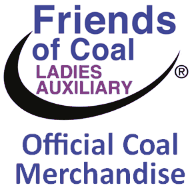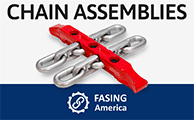
 











|
Signature Sponsor


November 24, 2025 - With the federal government reopened following the longest shutdown in U.S. history, let’s review key Mine Safety & Health Administration (MSHA) developments from 2025 and ahead to what may shape next year. MSHA assistant secretary’s agenda
It’s often said that “personnel is policy. Certainly, one of the big developments from 2025 was the nomination and confirmation of Wayne Palmer as assistant secretary at MSHA. Although Palmer has only been in office for about two months, he is expected to carry on the Trump administration’s emphasis on compliance assistance in 2026. This likely will involve expansion of the information hub on MSHA’s website. Another potential initiative is an increase in compliance assistance inspections done at an operator’s request. How widespread such visits will be remains a question to watch, as it is unclear whether MSHA will have the resources and personnel to widely implement such a practice. It seems evident that Palmer’s tenure will be one where a spirit of cooperation and communication with industry is a focus. This open door provides a chance for operators to raise issues of concern – including inspector misconduct. Complaints are typically made to a field office supervisor or a district manager. It is expected that, during Palmer’s tenure, well-founded and supported allegations will receive a respectful and considered audience. In a similar vein, it seems likely that MSHA will be willing to listen to and perhaps address issues related to consistency of inspector interpretation of MSHA standards. This could be accomplished through enhanced communication and fact gathering by MSHA, or permitting operators to submit topics for which interpretations are inconsistent or contradictory. Identifying these types of issues could lead to enhanced training for inspectors and regulatory direction to field offices from MSHA headquarters. Familiar face returnsThe Federal Mine Safety & Health Review Commission stands at four members as Marco Rajkovitch Jr. returns for a second term as a commissioner. There remains one vacant position on the commission, and it is anticipated that a nomination for the position will be made at some point in 2026. In the interim, the commission may consider issues related to Section 105(c) complaints under the Mine Act in the future – particularly issues tied to temporary reinstatement and remedies available to complainants under that provision. One 2025 commission decision that will be prominent in 2026 is Consol Pennsylvania Coal Co. Two commission members announced a new test for significant and substantial violations in the decision, which is now on appeal to the U.S. Court of Appeals. It promises to be a topic of considerable discussion in the new year. Silica rule up in airAnother critical 2025 issue that will continue to develop in the new year is MSHA’s silica rule. Due to ongoing litigation, the rule’s enforcement deadline for coal mines remains stayed. The compliance deadline for metal/nonmetal mines remains set for April 8, 2026. The ongoing litigation provides an opportunity for modifications to the rule. Areas to keep an eye on for potential modification include sampling requirements for miners who could be exposed to silica and how those samples are evaluated; the potential use of objective or historical data to establish baseline exposures; whether MSHA may allow miner rotation as an administrative control; and the limited circumstances in which respirators may be used for compliance. While being mindful of potential modifications, mine operators in the metal/nonmetal space will also want to ensure they have procured sampling equipment that satisfies or can be modified to satisfy ISO 7708:1995 – the standard for dust sampling devices set forth in the silica rule, prior to April 8. Mobile equipment rule enforcementFinally, we expect additional development in MSHA’s enforcement of the surface mobile equipment rule in 2026. To date, much of the enforcement has focused on contractors in instances where accidents occur and otherwise in determining whether operators have in fact a plan in place. It remains to be seen whether more widespread enforcement will follow and whether there will be disparities in interpretation and enforcement of the rule by district. Operators should be mindful that the rule expressly contemplates that surface mobile equipment plans be updated at least annually or as mining conditions or practices change. The rule also requires that miners be trained on a plan each time it is updated. |
 








|
